| |||||||
| Search Forums |
| Advanced Search |
| Go to Page... |
 |
| Search this Thread |  829,145 views |
| | #316 | |||
| Senior - BHPian | re: Scale Models - Aircraft, Battle Tanks & Ships Quote:
 (open the image in a new tab for a larger and clearer pic) (open the image in a new tab for a larger and clearer pic)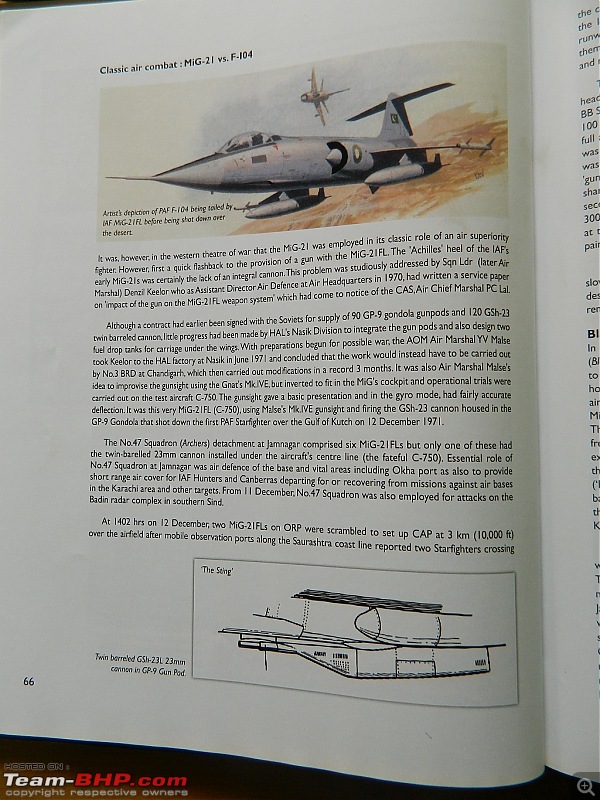 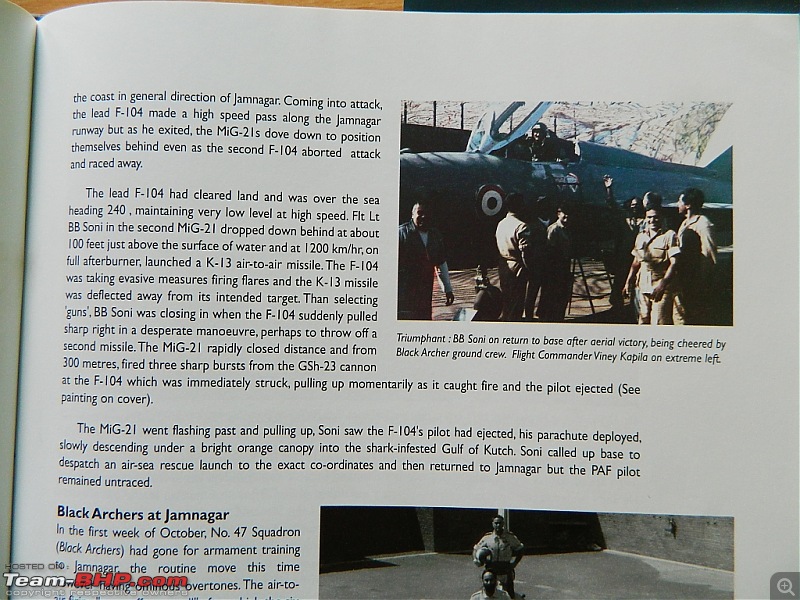 I also remember reading in another book that the ASTE & HAL were involved in the testing & fitment of the Gnat gunsight on the MiG-21FL just before the 71 war as the MiG-21FL's gunsight was pretty much useless while firing the GSh-23 cannons on the GP-9 gunpod. Apart from reading it in the books, I remember all this clearly because on the flight sim front, I think we had done this particular Gnat gunsight mod for the Strike Fighters 2 Indian AF MiG-21FL Type 77 mod(Early & Late) Quote:
 . . Looking forward eagerly to the pics. Which model is your P-51? The Legendary D? I am hoping for it to be in markings of some P-51 ace's personal aircraft. Quote:
The soldiers, pilots and sailors...all brave men from both sides were just following orders and at times in the heat of the battle, fog of war and seeing unimaginable horrors on the battlefield, they did things which were cowardly and disgusting. That topic has been shown brilliantly in movie like Platoon, Casualties of War, Full Metal Jacket, We were Soldiers etc. Even Ed Rasimus's books( two tours of Vietnam as a USAF F-105 & F-4 pilot) touch on that topic. It is a topic that is best not discussed. After all, the old adage goes...One man's freedom fighter is another man's terrorist. Afterall we are aviation enthusiasts and model collectors, let's stick to our passion of admiring these magnificent flying machines and ogling at scale models  . .Last edited by skanchan95 : 22nd April 2018 at 10:58. | |||
| |  ()
Thanks ()
Thanks
|
| |
| | #317 | |||
| Distinguished - BHPian  Join Date: Aug 2014 Location: Delhi-NCR
Posts: 4,326
Thanked: 72,240 Times
| re: Scale Models - Aircraft, Battle Tanks & Ships Quote:
Quote:
Quote:
 For years and decades I have been telling my wife that my models should adorn our drawing room and foyer but for some strange reason she refuses!! For years and decades I have been telling my wife that my models should adorn our drawing room and foyer but for some strange reason she refuses!! | |||
| |  ()
Thanks ()
Thanks
|
| | #318 |
| Distinguished - BHPian  Join Date: Aug 2014 Location: Delhi-NCR
Posts: 4,326
Thanked: 72,240 Times
| re: Scale Models - Aircraft, Battle Tanks & Ships Gloster Gladiator, bi-plane fighter. // 1:72 scale model; CORGI The model is just under 5" in length. 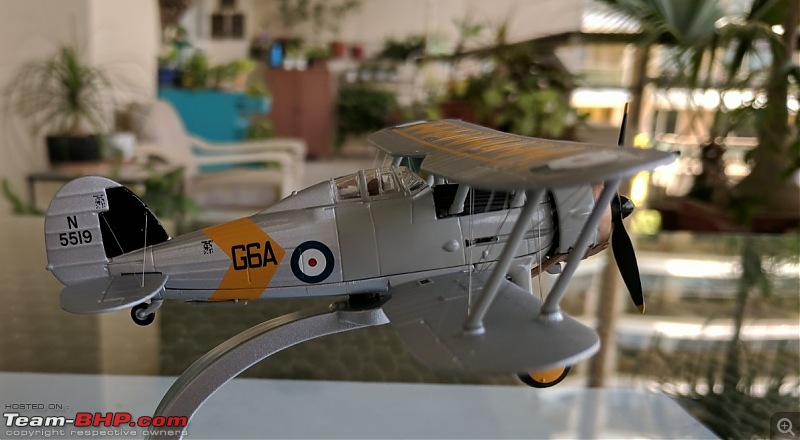 Length ~27 feet; Wing Span ~32 feet; Top speed 220 knots (~400 kmph); Stall speed an incredible 85 kmph!!!; Armament - Four .303 browning machine guns - two fired through the whirring props and two were mounted on the wings. 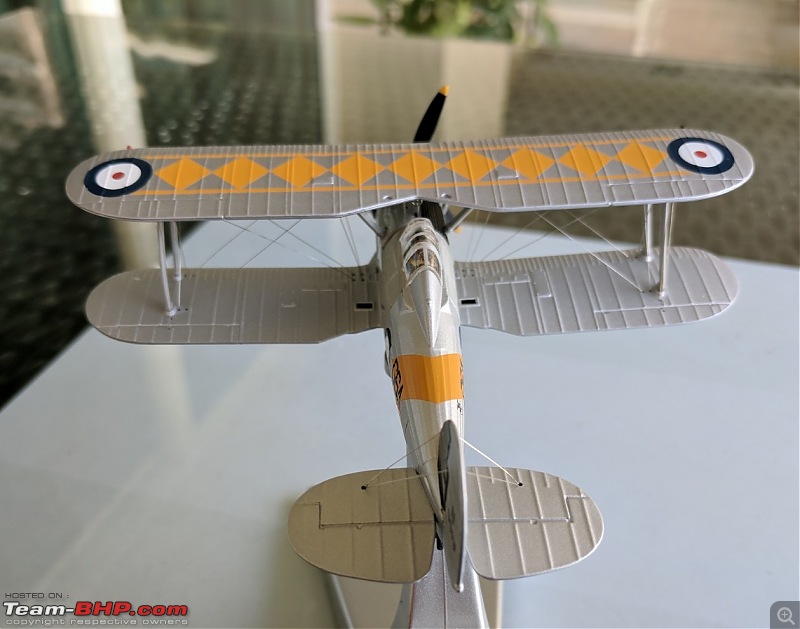 Gloster Sea Gladiator N5519 of 802 Naval Air Squadron (NAS) was not on board aircraft carrier HMS Glorious when the ship went down in the Norwegian Sea and took the entire 802 NAS down with it. N5519 was actually one of the most famous of all the 747 Gloster Gladiators produced. Left behind on the Island of Malta when the rest of No.802 NAS returned to the UK, N5519 was one of the celebrated ‘Defenders of Malta’ – a handful of Gladiators who provided air cover for the Island against significantly superior numbers of Italian Air Force aircraft. These Gladiators fought valiantly and took on almost mythical status when they were later christened ‘Faith, Hope and Charity’ by a Maltese newspaper – N5519 was the aircraft referred to as ‘Charity’. 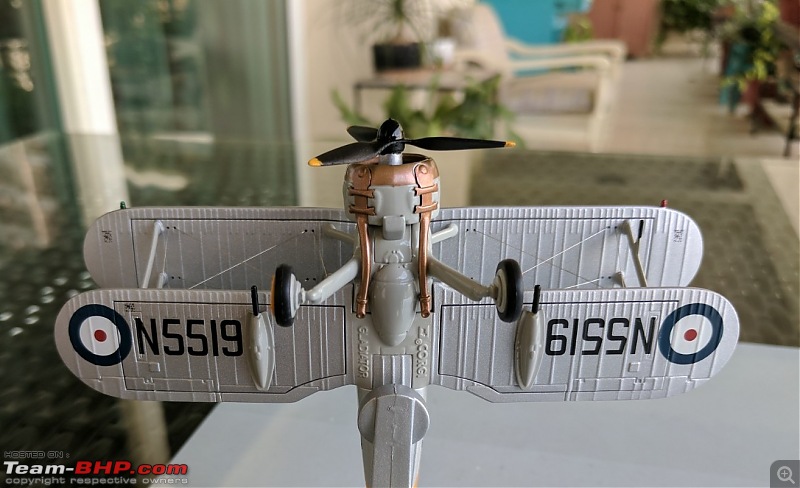 This famous Sea Gladiator claimed a number of aerial victories during the battles that raged in the skies over Malta, but was to eventually fall victim to a fighter of the Regia Aeronautica. In late July 1940, N5519 ‘Charity’ was being flown by Flying Officer Peter Hartley during heavy fighting above Grand Harbour when his aircraft was hit in the fuel tank by an Italian Fiat CR.42 Falco. The Gladiator crashed into the sea. Gloster Sea Gladiator N5519 ‘Charity’ was the only Malta Sea Gladiator to be shot down during aerial combat over the Island. 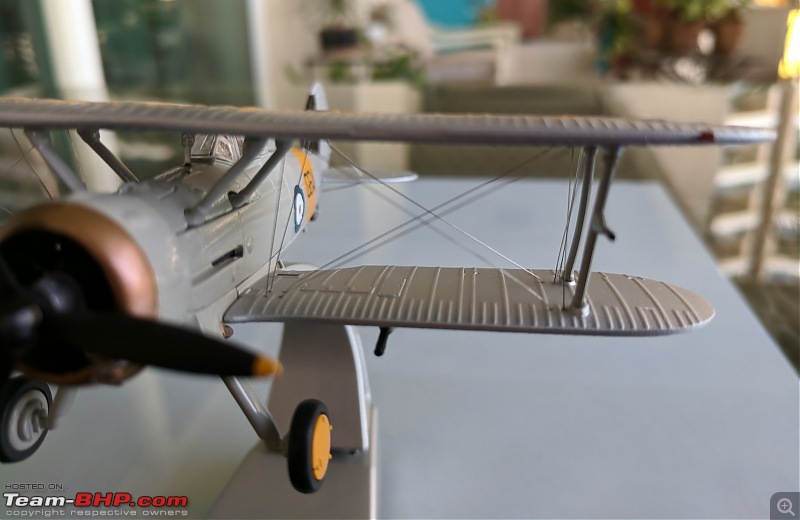 The beautiful Gloster Gladiator represented the pinnacle of biplane fighter design, but entered service just as the first of the fast monoplane fighters were already dictating the future of aerial warfare. A thoroughbred aircraft in every sense of the word, the Gladiator was the last biplane fighter to enter RAF service and the first to feature a fully enclosed cockpit. Highly manoeuvrable and extremely fast by biplane standards, the Gladiator also served with the Royal Navy, with aircraft modified for operations at sea by the inclusion of a strengthened fuselage, arrester hook and catapult spools, as well as provision for the stowage of an inflatable dinghy. Sea Gladiator N5519 wears the pre-war colours of No.802 NAS, serving on board HMS Glorious, with the black fin marking this aircraft as the Squadron Commander’s mount.  The Gladiator also served with the Finnish Air Force. Finland, in WW2, was aligned loosely with Germany and fought twice with the USSR. That makes the Gladiator one of the rare aircraft to serve on both sides (other than types that were captured and re-badged). 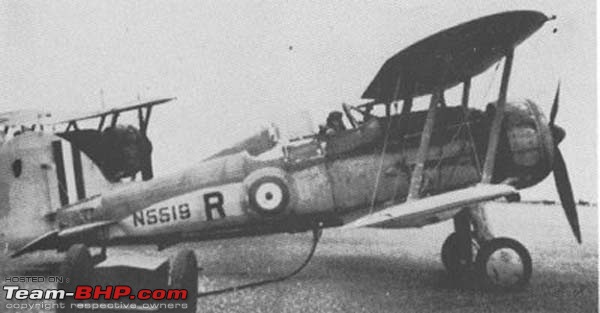 N5519 in real life ---------------------------------------------------------------------------------------------------------------------------- North American Aviation P-51D Mustang; Scale 1:72, CORGI The model is just under 6" in length and has a wingspan of just over 6"  Length ~32'; Wingspan~37'; Powered by a Rolls Royce Merlin V-12, 27,000 cc developing 1490 SHP continuous or 1720 SHP war-time emergency rating. The engine weighed 746 kgs.  Armament - 6 x .50" machine guns, upto 10 5" air to ground and 2 hard points for up to 1000 lbs of bombs. Notice the 'snap' on the starboard under carriage cover (left side of the photo). The covers of the landing gear are meant to come off so that the gear can be fitted and the cover fitted vertically. But sadly CORGI's quality has dropped in recent years and if you try to prise it open with a tweezer it snaps. I have not experienced this in earlier CORGI products bought 10 or 15 years back. 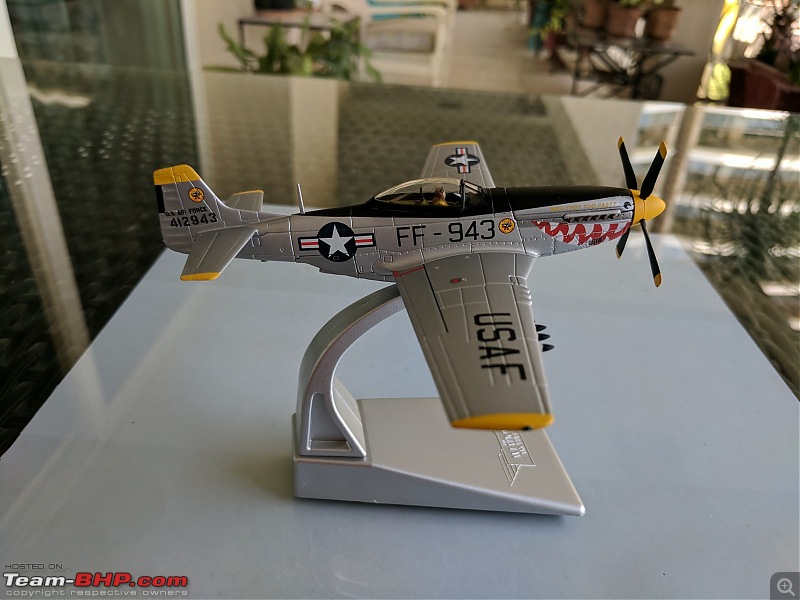 The longest ranged single engine fighter of WW2 most probably. It married a American airframe and wings with the Rolls Royce Merlin engine to give what became the P-51B the best escort fighter the Western Allies had. It married the maneuverability and high altitude performance of the Spitfire with long range of the Mosquito. 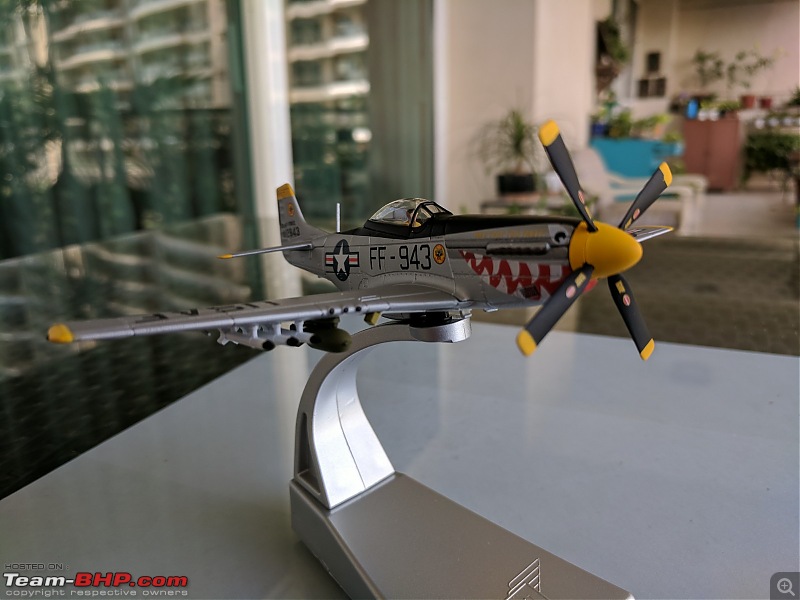 It was not as tight turning as a Spitfire or Bf-109 or Fw-190 but good enough to hold its own. Where it scored was its top speed of 440 mph (~700 kmph) and ability to maintain throttle at high altitudes. Its combat radius with tip tanks was in the order of ~1000 kms with reserves enough to escort Allied bombers from UK to Berlin & back. The P-51D was also used in the Korean war Last edited by V.Narayan : 22nd April 2018 at 17:01. |
| |  ()
Thanks ()
Thanks
|
| | #319 | ||
| Senior - BHPian | re: Scale Models - Aircraft, Battle Tanks & Ships Quote:
The P-51D looks fabulous. Lovely to see those detailed markings on the model, specially the sharkmouth and "Was that too Fast" on the nose. Pity about the decline in quality of Corgi models. Since there is an FF- serial on the model, technically this is an F-51D Mustang that took part in the Korean War. Sometime after WW2, United States Air Force was formed as a distinct service - prior to that the Air Force was a branch of the Army and was known as US Army Air Force. Aircraft that previously had a ‘P’ designation were reallocated an ‘F’ designation, e.g. the P-51 become F-51, the Lockheed P-80 became the F-8, Republic P-84s became F-84s. The Korean War was the true beginning of the Jet combat age. Prop fighters had begun to get outdated and were largely relegated to ground attack roles. Quote:
 Last edited by skanchan95 : 23rd April 2018 at 10:15. | ||
| |  ()
Thanks ()
Thanks
|
| | #320 | ||
| Distinguished - BHPian  Join Date: Aug 2014 Location: Delhi-NCR
Posts: 4,326
Thanked: 72,240 Times
| re: Scale Models - Aircraft, Battle Tanks & Ships Quote:
Quote:
 What a pleasure to hear this. You have a handful ahead of you Sandesh. 20 years of fun and a looooottt of hard work. What a pleasure to hear this. You have a handful ahead of you Sandesh. 20 years of fun and a looooottt of hard work.------------------------------------------------------------------------------------------------------------------------------------------------------------------------ Lockheed L1049 Super Constellation; Herpa 1:200 scale, diecast The model is about 7” long and has a wing span of ~8” The aircraft the along with the DC-6 and DC-7 brought international air travel to passengers beyond the super rich. The Constellation was the first passenger aircraft to enter successful service with both pressurization as well as effective noise insulation married with a range of over 5000 kms with a full passenger payload. This Air Ceylon L1049G was leased from KLM and christened ‘Somadevi’. It served the airline from 1958 to 1960. KLM was shifting to the DC-8 and some of its pro aircraft were getting surplus. The extra pointy nose carried an early weather radar. Photos below along with one of the real thing. This Constellation compliments my Air India Malabar Princess L-749. It is the only type of which I have two. | ||
| |  ()
Thanks ()
Thanks
|
| | #321 |
| Distinguished - BHPian  | re: Scale Models - Aircraft, Battle Tanks & Ships Love the Connie! One of the prettiest prop passenger planes about. There are still several air worthy ones out there I believe. Lufthansa is doing a fantastic restoration on one: http://superstar.lufthansa.com/de/home.html Jeroen |
| |  ()
Thanks ()
Thanks
|
| | #322 | |
| BHPian Join Date: May 2009 Location: NYC / Lucknow
Posts: 702
Thanked: 4,126 Times
| re: Scale Models - Aircraft, Battle Tanks & Ships Quote:
| |
| |  ()
Thanks ()
Thanks
|
| | #323 |
| BHPian Join Date: May 2009 Location: NYC / Lucknow
Posts: 702
Thanked: 4,126 Times
| re: Scale Models - Aircraft, Battle Tanks & Ships Limox Airbus A321-131 D-AIRR (1:200 Plastic) "Kranichschutz" (Crane Protection) From the Lufthansa website: The Lufthansa Group has been supporting Crane Protection since the 1980s. Our goal has always been to support the protection of the species. To celebrate the 25th anniversary of Crane Protection Germany, the Lufthansa Group has a very special present for all friends of the crane – their aircraft “Wismar” will be taking off with a special design from this week. The Airbus A321-100 with the registration D-AIRR flies all across Europe and will be decorated with a stylized crane design for six months. 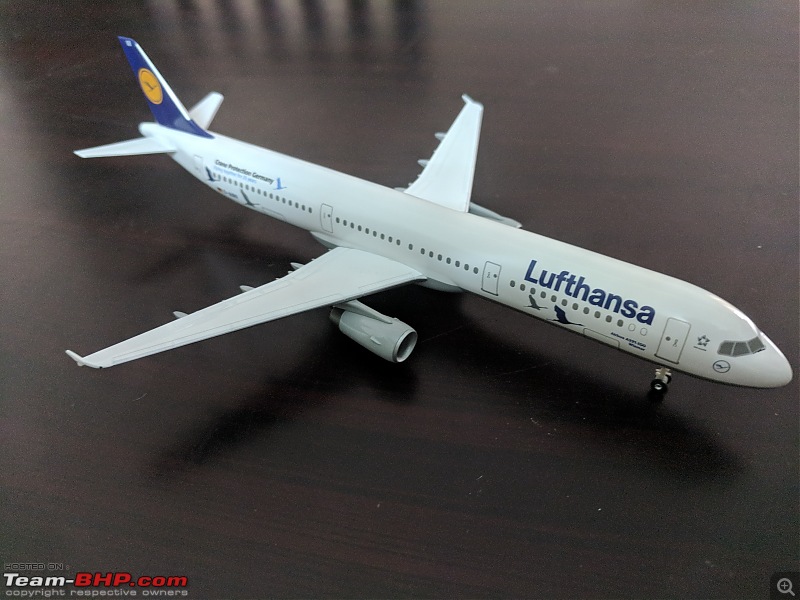 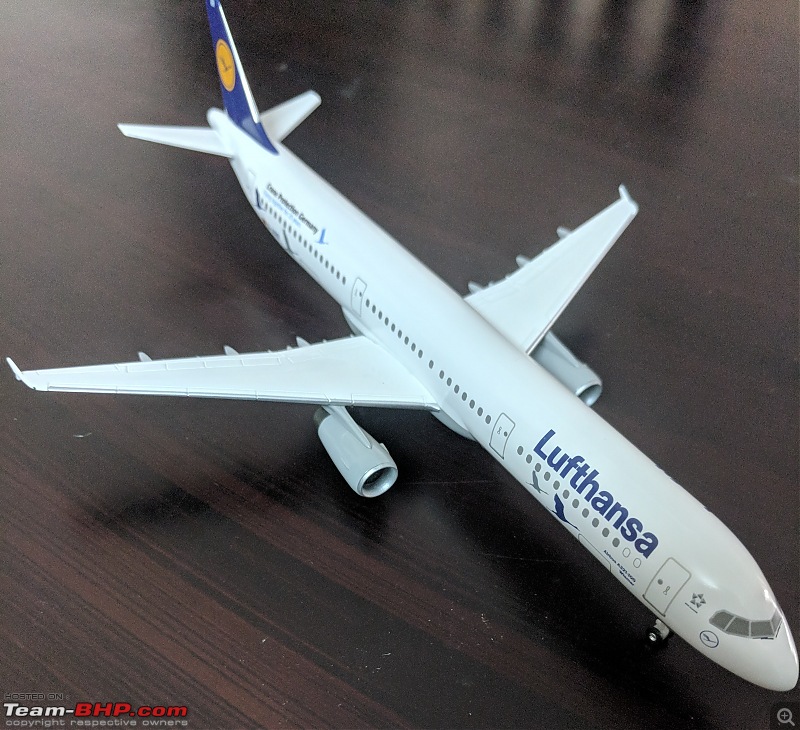  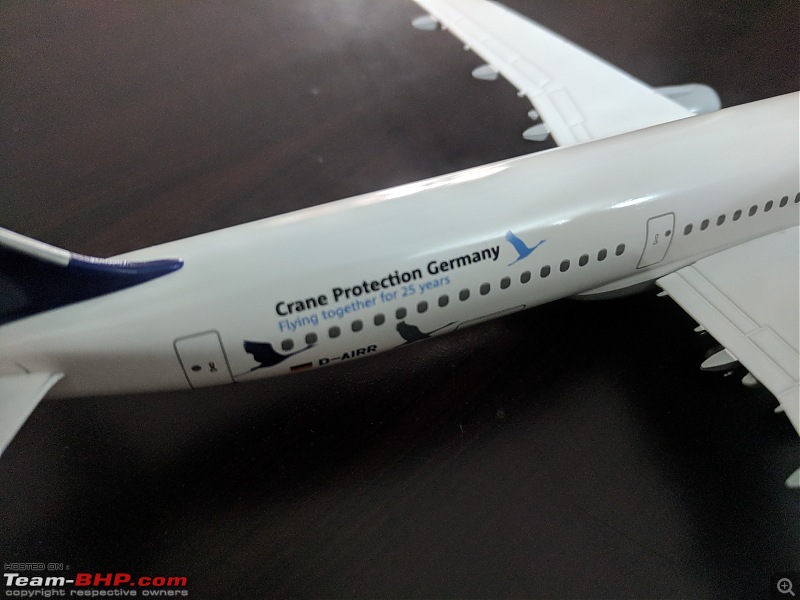 The real aircraft. 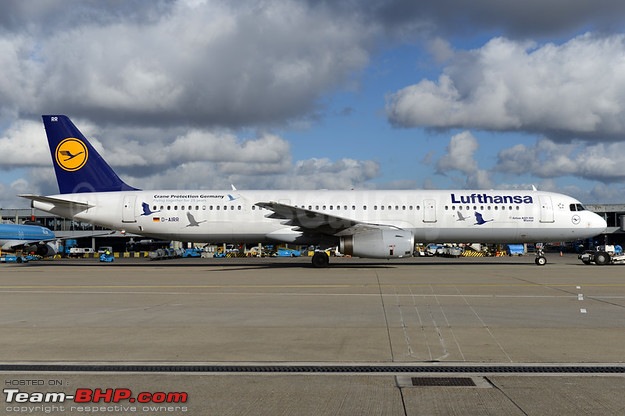 Airbus A319, A320 and A321 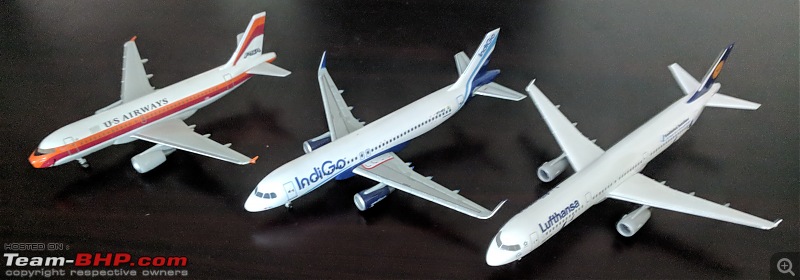 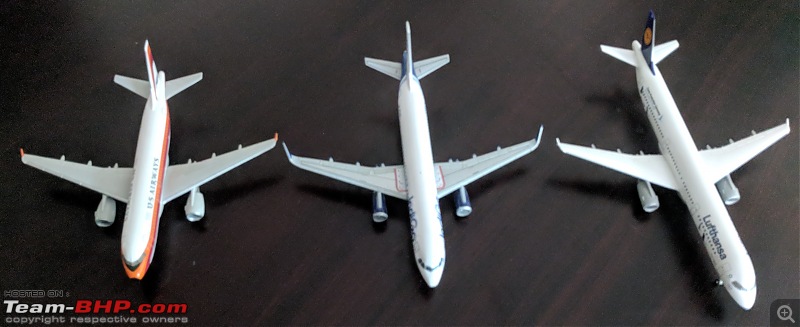 My Lufthansa 1:200 Fleet, all Limox Plastic models. 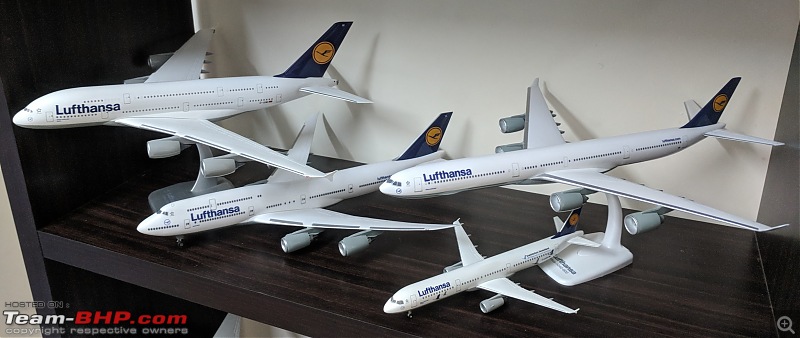 |
| |  ()
Thanks ()
Thanks
|
| | #324 | |
| Distinguished - BHPian  Join Date: Aug 2014 Location: Delhi-NCR
Posts: 4,326
Thanked: 72,240 Times
| re: Scale Models - Aircraft, Battle Tanks & Ships Your LH fleet looks handsome. I must say the fit and finish of Limox is very neat and good looking. Congratulations. Did you purchase on line or from Germany on your travels? The Air Ceylon Constellation was purchased in 2011 from a shop in Geneva which I used to frequent each year in earlier times. The shop was dedicated to scale cars, planes and trains. Quote:
| |
| |  ()
Thanks ()
Thanks
|
| | #325 | |
| BHPian Join Date: May 2009 Location: NYC / Lucknow
Posts: 702
Thanked: 4,126 Times
| re: Scale Models - Aircraft, Battle Tanks & Ships Quote:
 , while the A380 and A340 were ordered online from European shops. The A321 is from Ebay Hong Kong. , while the A380 and A340 were ordered online from European shops. The A321 is from Ebay Hong Kong.Last edited by Foxbat : 23rd April 2018 at 20:41. | |
| |  ()
Thanks ()
Thanks
|
| | #326 | |||
| Senior - BHPian | re: Scale Models - Aircraft, Battle Tanks & Ships Quote:
 . .Quote:
 . I really wish some day some brand makes an Indian Navy Super Connie with an ASV radar modelled. . I really wish some day some brand makes an Indian Navy Super Connie with an ASV radar modelled. Quote:
 . .It feels so nice to see a great single airline collection like this. You must be proud of it.Add an A330 and an A350 in there and your LH long range fleet will be complete  . . The LH livery is so simple yet to elegant. They have messed it up somewhat with their new livery. | |||
| |  ()
Thanks ()
Thanks
|
| |
| | #327 | |
| BHPian Join Date: May 2009 Location: NYC / Lucknow
Posts: 702
Thanked: 4,126 Times
| re: Scale Models - Aircraft, Battle Tanks & Ships Quote:
 . A318 seems to be a rare aircraft, with only 80 made and no further on order. Lets see if I find this model online somewhere. . A318 seems to be a rare aircraft, with only 80 made and no further on order. Lets see if I find this model online somewhere.Looking forward to acquire a high quality Lufthansa A350, A330 somehow doesn't appeal to me, also have 3 already. Last edited by suhaas307 : 27th April 2018 at 14:07. Reason: Trimming quoted post for improved readability | |
| |  ()
Thanks ()
Thanks
|
| | #328 | |
| Distinguished - BHPian  Join Date: Aug 2014 Location: Delhi-NCR
Posts: 4,326
Thanked: 72,240 Times
| re: Scale Models - Aircraft, Battle Tanks & Ships Quote:
--------------------------------------------------------------------------------------------------------------------------------------------------------------------------------- HS-748 (earlier called the Avro 748); Aero Classics; 1:400 scale; diecast This model is about 2" long and has a wingspan of just under 3". As tiny as it gets. Only reason I bought it was the Indian Airlines livery. Quality and detailing is so-so; nothing to write home about. The supplier had only one piece, apparently, so I took it. In the 1980s I flew endlessly on Avro's on my work travel and developed a soft spot for it. In the peak summer months of May & June the Avro could barely lift off, if at all, from Jabalpur's short runway. And the pilot would announce that, for example, 6 passengers and their luggage (out of 40) must be off loaded. Indian Airlines would pick 6 single male travelers as first priority to be off loaded and I invariably was one. Life was simpler and less fair with out consumer rights and all. Interestingly Krishna Menon (Defence Minister in the late 1950s/early 1960s) signed up for purchase and license production of the Avro 748 even before it had passed UK flight acceptance trials without even a phone call to either the IAF or Indian Airlines. The aircraft was foisted on both organizations despite its less than adequate hot and high take off performance. That is why, through the '60s and '70s and '80s Fokker F.27s were used in the North East flight sectors of Indian Airlines. PC Lal protested strongly about the Avro 748 and was sacked by Krishna Menon, in October 1962, for his temerity! Literally the next week the Indo-China war of 1962 broke out after simmering for a while. Before PC Lal could complete his exit Krishna Menon got sacked a few weeks later and PC Lal was re-instated!! Good for us as Air Chief Marshall PC Lal rose to be the IAF top boss and led the IAF in 1971 against Pakistan 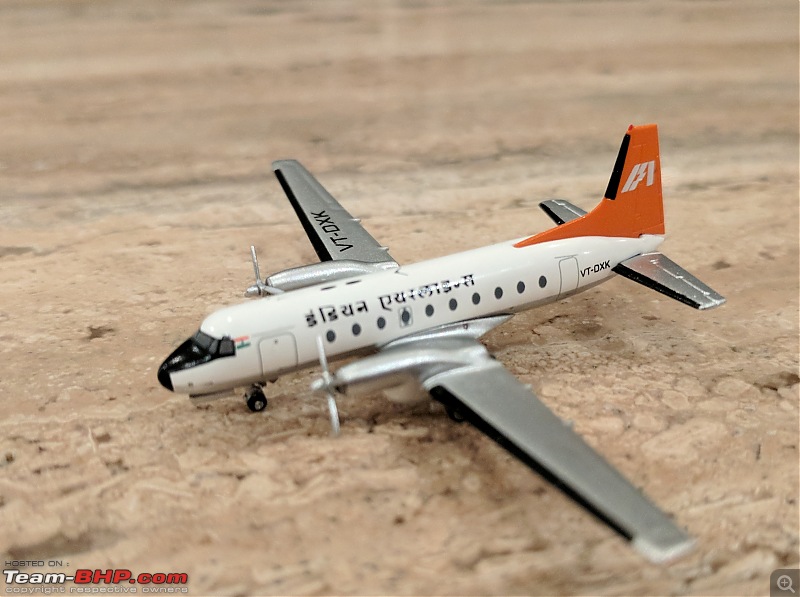 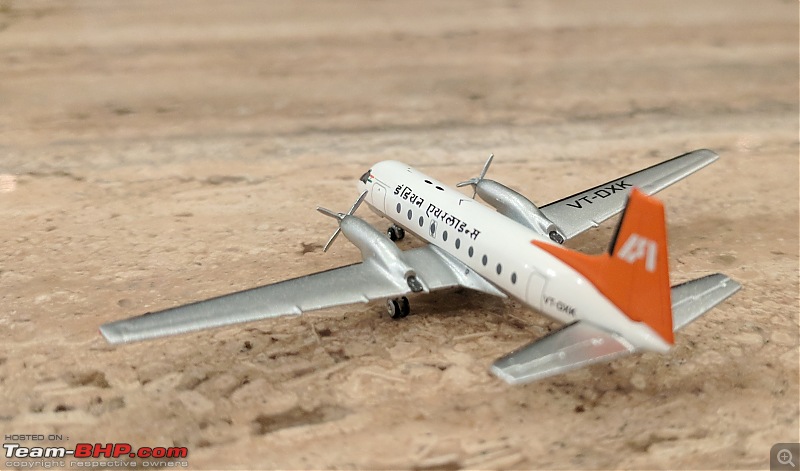 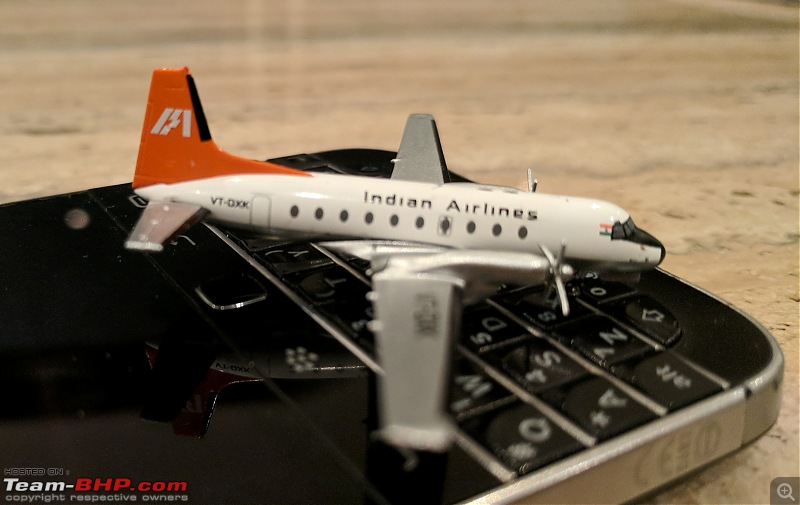 On my blackberry QWERTY key board 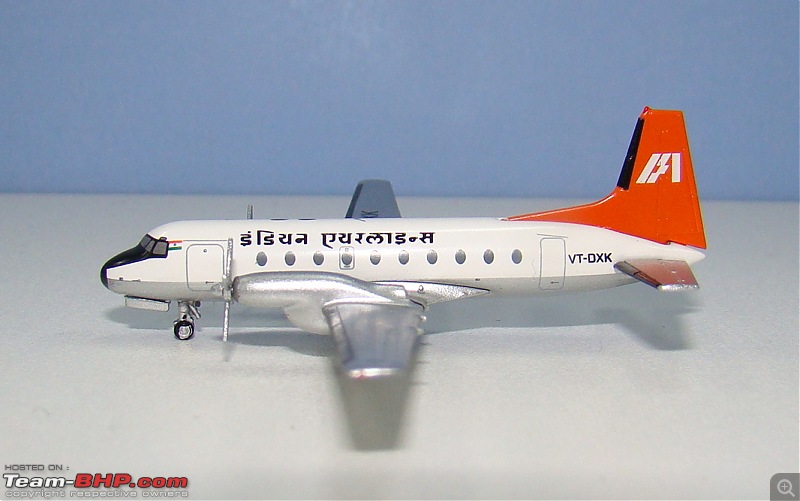 Photo from the net of the same model with better camera focus Last edited by V.Narayan : 25th April 2018 at 09:12. | |
| |  ()
Thanks ()
Thanks
|
| | #329 | |||
| Senior - BHPian | re: Scale Models - Aircraft, Battle Tanks & Ships Quote:
Quote:
Quote:
As urgent replacement for Indian Airlines( and IAF) Dakotas, when the Avro was selected over the Fokker F.27 and a Lockheed aircraft mentioned as CL 49(?), the Avro was still in its design stage - no prototype was available for flight testing. ACM Lal at that time was deputed as GM of Indian Airlines and he was against the Avro as it was still in the prototype stage. He was in favour of the proven Fokker F.27 and refused to sign on papers. Krishna Menon threatened to "fix" ACM Lal for his opposition to the Avro. Pandit Nehru apparently intervened agreeing to purchase F.27s till an HS.748 protoype was available for full evaluation. But V K Krishna Menon eventually had his way and HS.748s were selected for license production in India. | |||
| |  ()
Thanks ()
Thanks
|
| | #330 | ||||
| Distinguished - BHPian  Join Date: Aug 2014 Location: Delhi-NCR
Posts: 4,326
Thanked: 72,240 Times
| re: Scale Models - Aircraft, Battle Tanks & Ships Air India Boeing 747-200 'Emperor Shajehan' 1:200; Inflight200 The model is about 14" long Where Sandesh goes I follow  . A big thanks to skanchan95 for helping me source both the 747 and the 707 below. Polished metal under surface exactly as the real aircraft. High quality detailing. The regal lines of the 747-200 are priceless. . A big thanks to skanchan95 for helping me source both the 747 and the 707 below. Polished metal under surface exactly as the real aircraft. High quality detailing. The regal lines of the 747-200 are priceless.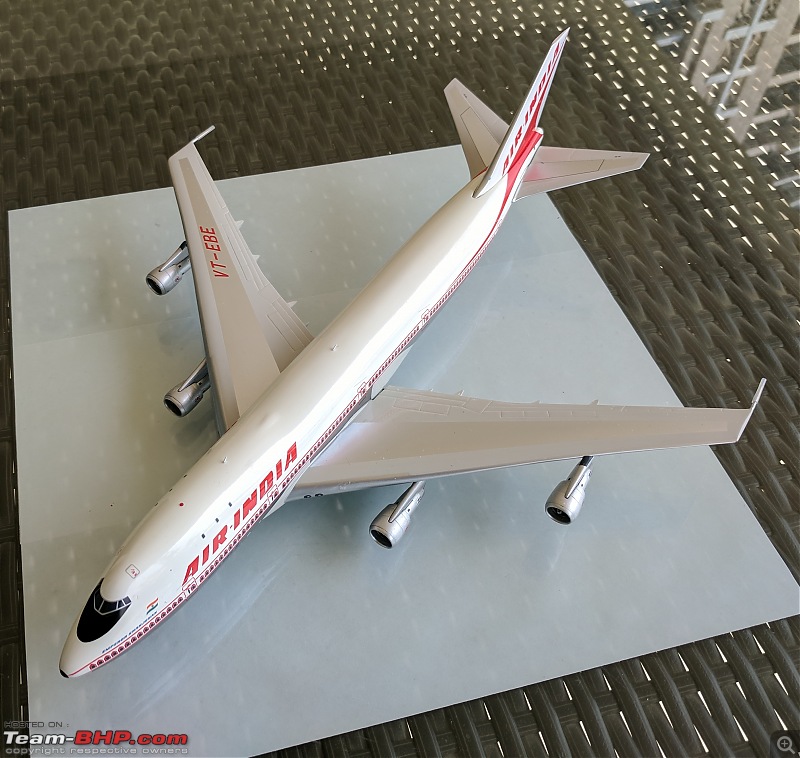 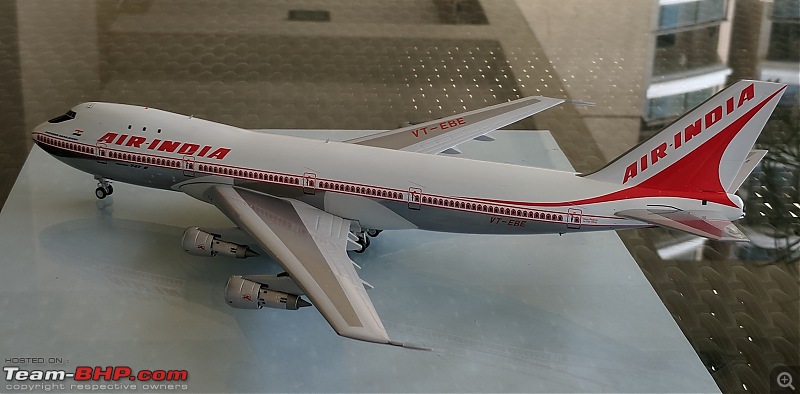 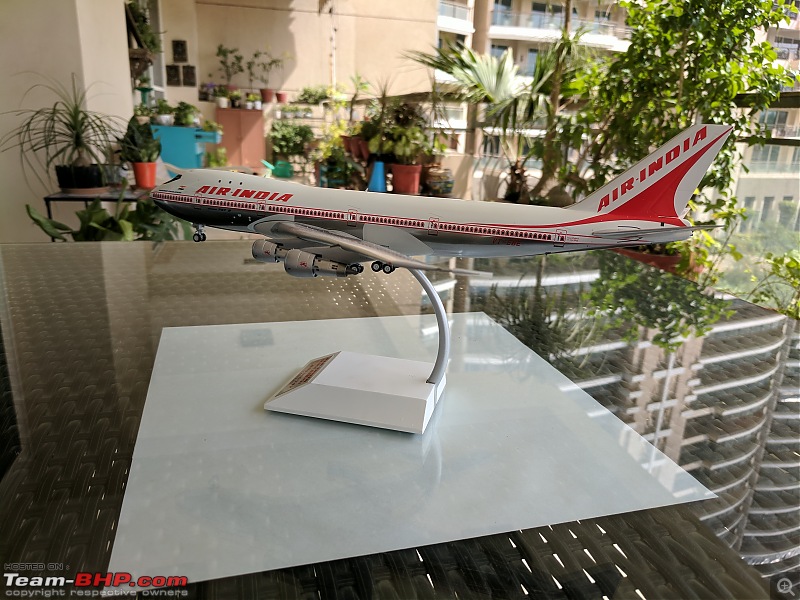 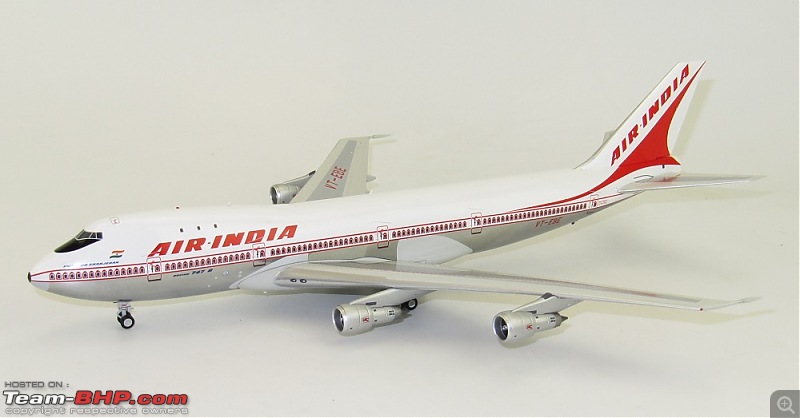 Last photo from Inflight200 Air India Boeing 707-420 VT-DJK; 1:200 Inflight200 Actual model is just under 10" long One of the first 6 jets of Air India. High quality finish and detailing as can be expected from Inflight. 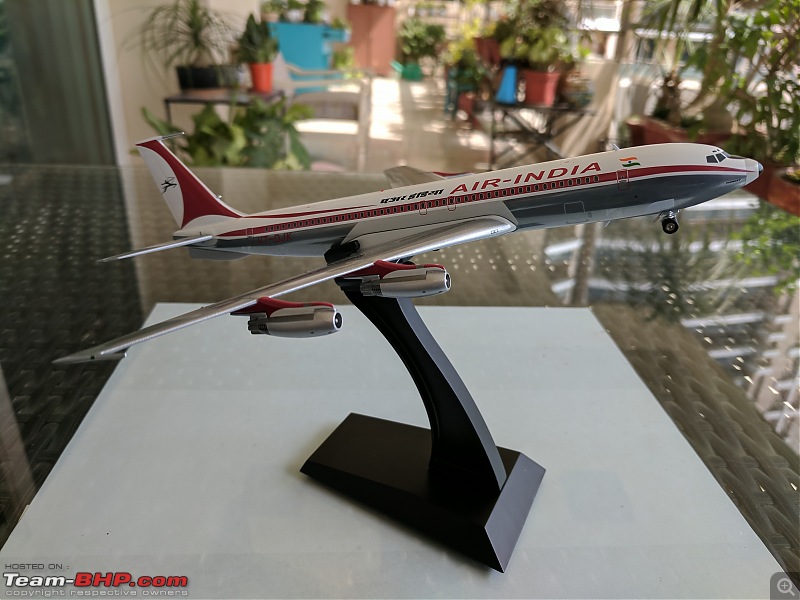 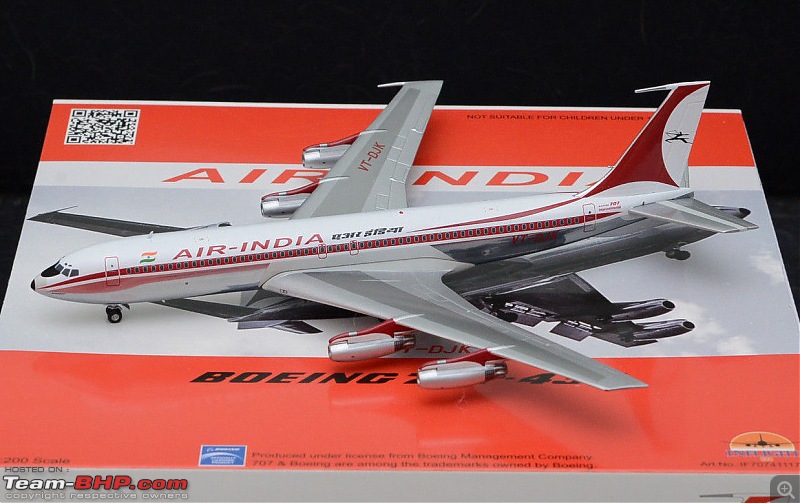 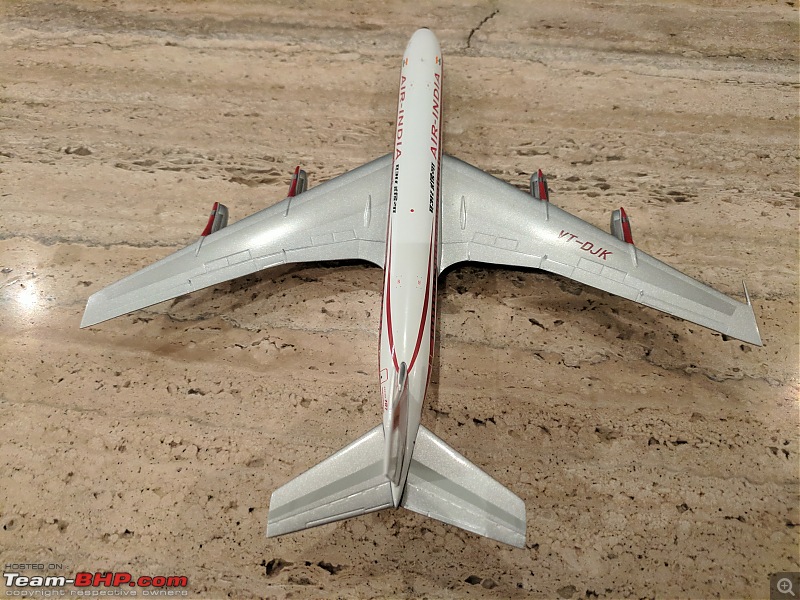 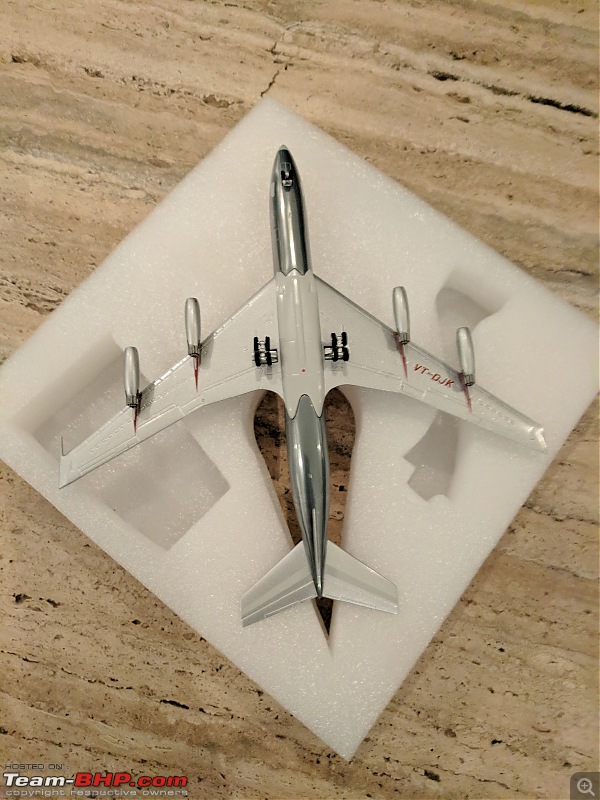  Don't miss the two Lockheed Galaxy's in the background. Quote:
 Quote:
Quote:
Quote:
| ||||
| |  ()
Thanks ()
Thanks
|
 |


